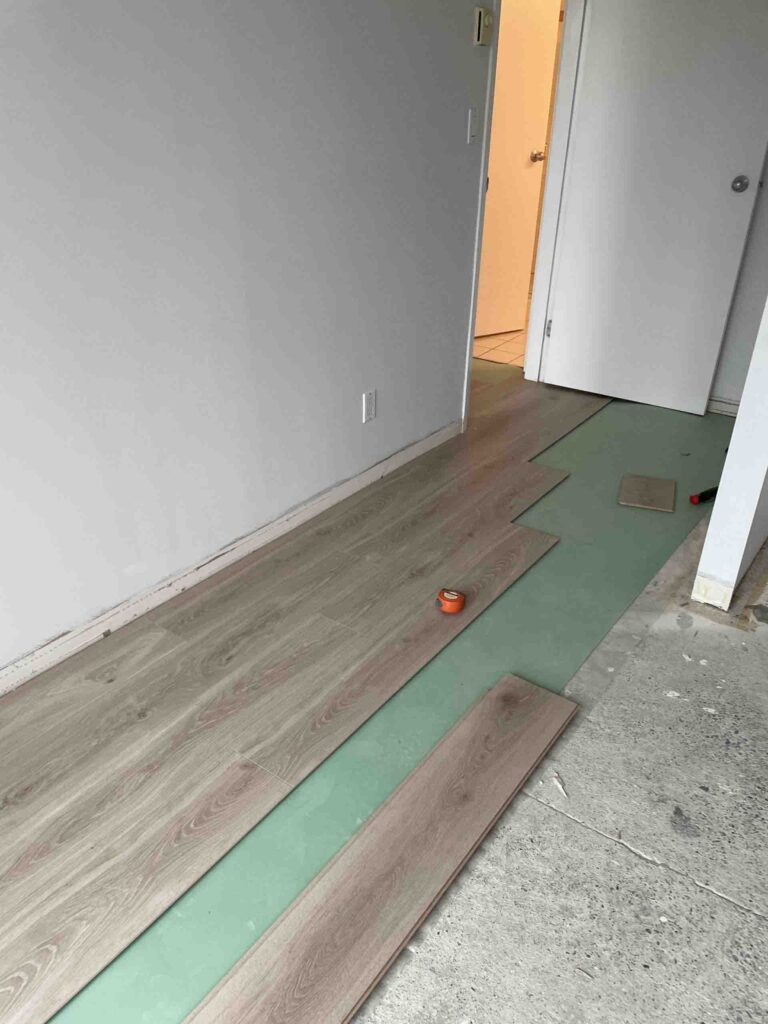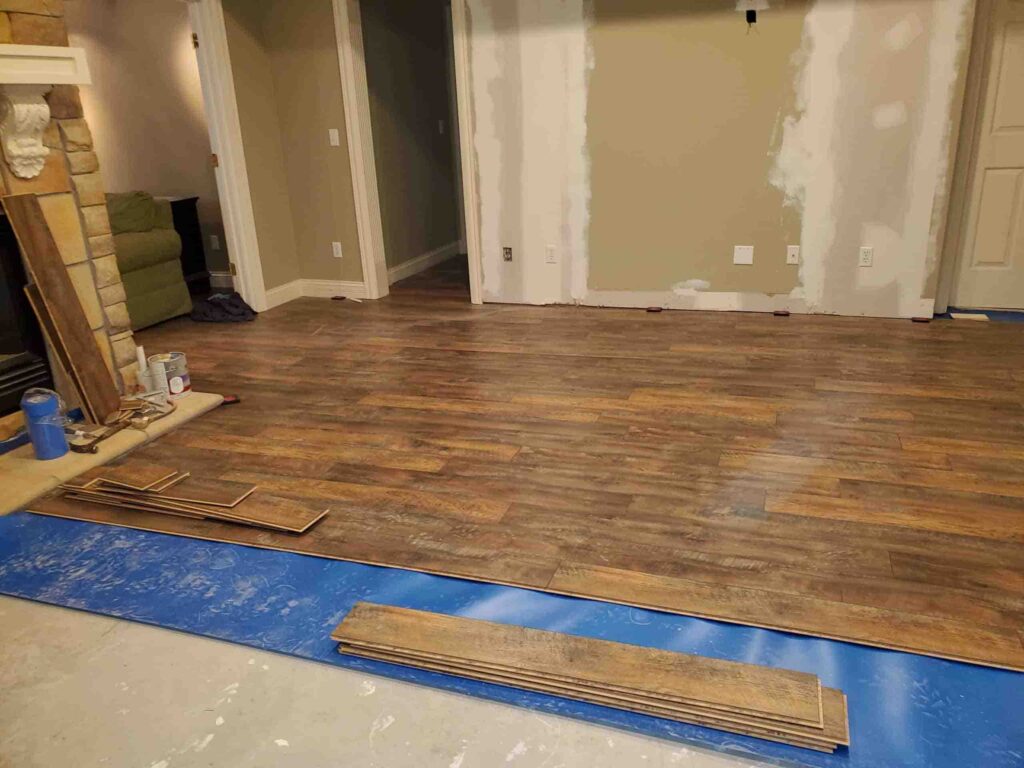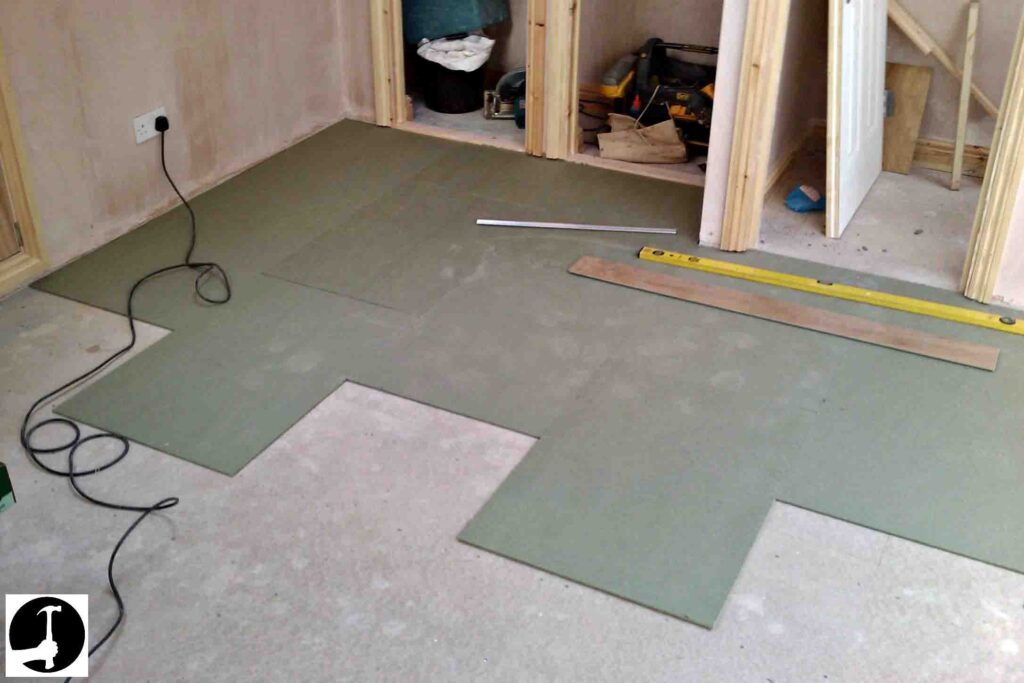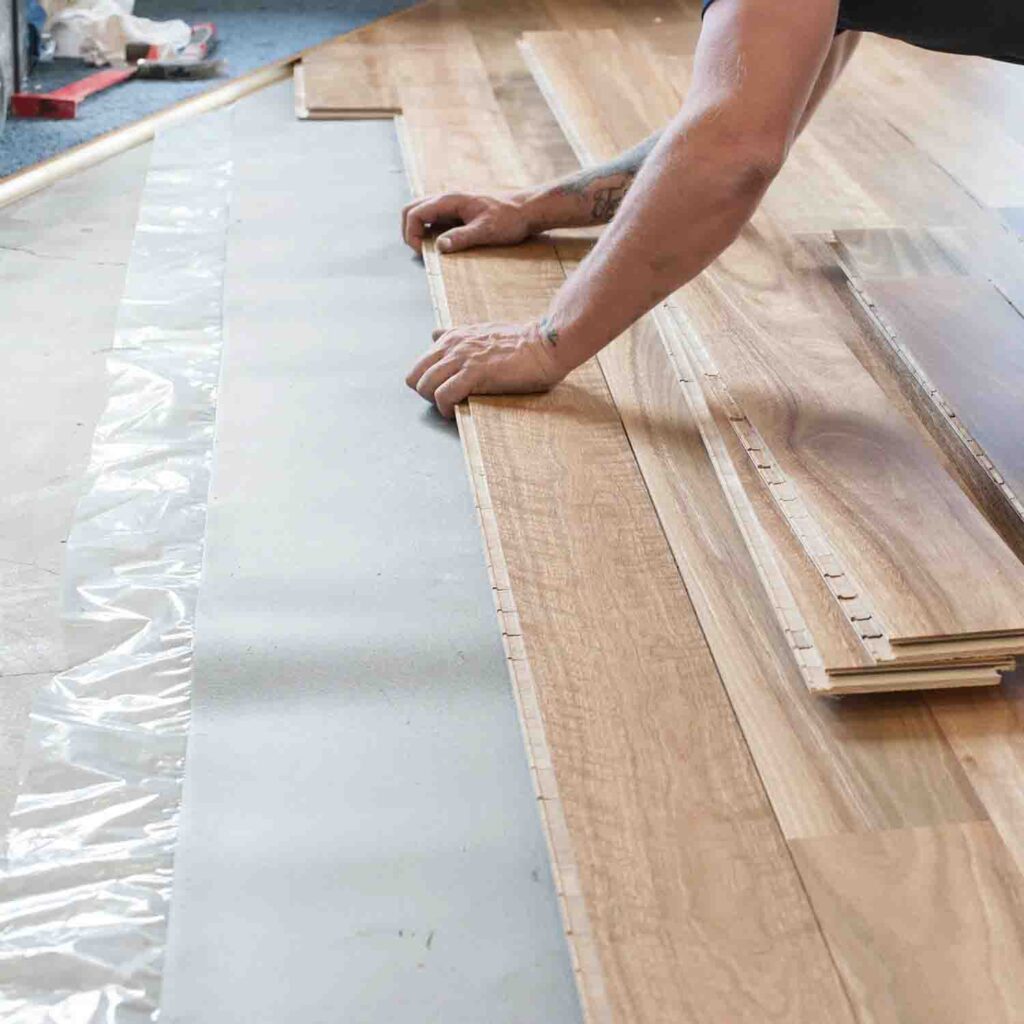When it comes to laminate flooring, many homeowners and professionals focus heavily on the top layer’s design, durability, and finish. But what about what lies beneath? Choosing the right underlay is often overlooked, yet it’s one of the most important factors that affect the comfort, lifespan, and performance of your laminate floor. Imagine walking across a floor that feels cold, hollow, or noisy — a poor underlay choice could be the culprit.
In short, laminate flooring underlay acts as a cushion that enhances sound insulation, moisture protection, and comfort, while extending the floor’s durability. The right underlay depends on your subfloor type, room environment, and specific performance needs.
Many homeowners have stories of regretting their underlay choice after dealing with squeaky floors, moisture damage, or cold feet. This guide will walk you through what underlay really does, which types are best, and how to pick the perfect one for your laminate floor — so you never have to face those issues. Ready to dive deeper? Let’s start from the basics.
1.What Is Laminate Flooring Underlay and Why Is It Important?

Laminate flooring underlay is a thin cushioning layer placed between the subfloor and laminate. It provides sound absorption, moisture protection, thermal insulation, and helps to even out subfloor imperfections.
- Function of Underlay: Comfort and Soundproofing Underlay absorbs footstep noise and reduces hollow sounds. Without it, laminate floors can feel hard and noisy, especially in multi-level homes or apartments.
- Moisture Barrier Role Certain underlays come with built-in moisture barriers that prevent water vapor from damaging laminate flooring, which is critical over concrete subfloors or in damp areas.
- Thermal Insulation and Energy Efficiency Underlays improve warmth underfoot, making rooms feel cozier and potentially lowering heating costs in cold climates.
- Evening Out Subfloor Imperfections Laminate requires a flat surface; the underlay helps smooth minor bumps and cracks, preventing damage and squeaks.
- Impact on Flooring Warranty Manufacturers often require specific underlay types for warranty validity; wrong choices can void protection.
- Example: A family installed laminate without underlay on a concrete slab and experienced cold floors and moisture damage within a year. The underlay would have mitigated these issues.
| Aspect | Description | Example / Notes |
|---|---|---|
| Function of Underlay | Absorbs footstep noise, reduces hollow sounds for comfort and soundproofing. | Without underlay, floors feel hard and noisy in multi-level homes. |
| Moisture Barrier Role | Built-in moisture barriers prevent water vapor damage, crucial over concrete or damp areas. | Prevents laminate warping and swelling caused by moisture. |
| Thermal Insulation | Provides warmth underfoot, making rooms cozier and lowering heating costs in cold climates. | Enhances energy efficiency in homes. |
| Evening Out Subfloor Imperfections | Smooths minor bumps and cracks, preventing damage and squeaks in laminate flooring. | Necessary for proper laminate installation on uneven surfaces. |
| Impact on Flooring Warranty | Specific underlay types often required by manufacturers to keep warranty valid. | Using wrong underlay can void flooring warranty. |
| Practical Example | Installing laminate without underlay on concrete led to cold floors and moisture damage within a year. | Proper underlay could have prevented these issues. |
2.Which Types of Underlay Are Best Suited for Laminate Flooring?

Common underlay materials include foam, felt, cork, and rubber, each offering varying degrees of soundproofing, moisture resistance, and durability suited to different laminate flooring needs.
- Foam Underlay: Budget-Friendly but Basic Often polyethylene foam, it offers good cushioning and minimal moisture resistance. Best for dry, low-traffic areas.
- Felt Underlay: Superior Sound and Thermal Insulation Made from recycled fibers, felt is denser and ideal for noise reduction and warmth, perfect for residential spaces.
- Cork Underlay: Natural and Eco-Friendly Cork is antimicrobial and moisture resistant, providing excellent soundproofing and durability, favored for sustainable builds.
- Rubber Underlay: High Performance Offers premium sound absorption and moisture barriers but at a higher cost, suitable for commercial or high-traffic areas.
- Combination Underlays Some underlays mix materials (foam with moisture barriers or cork with rubber) to balance cost and performance.
- Considerations: Thickness varies from 2mm to 6mm — thicker underlay usually means better comfort but may affect laminate locking systems.
| Underlay Type | Material & Features | Benefits | Best Use Cases | Considerations |
|---|---|---|---|---|
| Foam Underlay | Polyethylene foam; budget-friendly, basic moisture resistance | Good cushioning; affordable | Dry, low-traffic areas | Minimal moisture protection |
| Felt Underlay | Made from recycled fibers; denser | Superior sound and thermal insulation | Residential spaces | Denser, thicker; excellent noise reduction |
| Cork Underlay | Natural cork; antimicrobial and moisture resistant | Excellent soundproofing and durability | Sustainable builds, eco-friendly homes | Eco-friendly, natural material |
| Rubber Underlay | High-performance rubber; premium sound absorption and moisture barrier | Superior sound absorption; moisture barrier | Commercial/high-traffic areas | Higher cost |
| Combination Underlays | Mix of foam + moisture barrier or cork + rubber | Balanced cost and performance | Various applications | Thickness varies, impacts locking system compatibility |
| Thickness | Typically 2mm to 6mm | Thicker underlay = better comfort | Depends on flooring system requirements | Excessive thickness may affect laminate locking system |
3.How to Choose the Right Underlay for Different Flooring Environments?

The ideal underlay depends on subfloor type, moisture conditions, and room use — concrete subfloors require moisture barriers, while wood subfloors prioritize cushioning and soundproofing.
- Subfloor Types and Underlay Compatibility
- Concrete: Requires underlay with moisture barriers to prevent vapor damage.
- Plywood/Wood: Needs cushioning to absorb impact and reduce noise but usually less moisture protection.
- Existing Flooring: May require a thinner underlay for proper laminate installation.
- Room Conditions Matter
- High-Moisture Areas (kitchens, basements): Moisture-resistant or waterproof underlays are critical.
- High-Traffic Spaces: Durable underlays that resist compression and wear extend flooring life.
- Multi-Story Homes: Soundproofing underlays prevent noise transmission between floors.
- Climate and Thermal Needs In colder climates, thicker and insulating underlays can reduce energy costs and improve comfort.
- Installation Constraints Some laminate flooring systems specify maximum underlay thickness or types to maintain locking mechanism integrity.
- Example: Installing laminate over a basement concrete slab without vapor barrier underlay can lead to mold and floor warping.
| Factor | Details | Example / Notes |
|---|---|---|
| Subfloor Types | – Concrete: Requires moisture barrier underlay to prevent vapor damage.- Plywood/Wood: Needs cushioning for impact absorption and noise reduction, less moisture protection.- Existing Flooring: May require thinner underlay for proper laminate installation. | Concrete without vapor barrier risks moisture damage; wood benefits from cushioning. |
| Room Conditions | – High-Moisture Areas: Use moisture-resistant or waterproof underlay.- High-Traffic Spaces: Choose durable, compression-resistant underlay.- Multi-Story Homes: Soundproofing underlay reduces noise transmission between floors. | Kitchens and basements need moisture protection; apartments benefit from soundproofing. |
| Climate and Thermal Needs | Thicker, insulating underlays improve warmth and reduce energy costs in cold climates. | Colder regions gain comfort and energy savings from thermal insulation. |
| Installation Constraints | Some laminate flooring systems limit underlay thickness or require specific types to protect locking mechanisms. | Excessive thickness may cause locking failure or installation issues. |
| Practical Example | Installing laminate on basement concrete without vapor barrier led to mold growth and floor warping. | Highlights moisture barrier importance over concrete slabs. |
4.Do You Need a Moisture Barrier Underlay for Laminate Flooring?

A moisture barrier underlay is essential when installing laminate flooring over concrete or in moisture-prone areas to prevent water vapor from damaging the floor.
- What Is a Moisture Barrier? A thin plastic or foil layer integrated into or placed under the underlay to block water vapor from rising into the laminate.
- When Is It Necessary? Over concrete slabs, basements, ground floors, or areas prone to humidity and spills.
- Risks of Skipping Moisture Barriers Laminate can warp, swell, or delaminate from trapped moisture, voiding warranties and requiring costly repairs.
- Dual-Function Underlays Many modern underlays combine cushioning with a built-in moisture barrier, simplifying installation.
- Environmental Considerations Using vapor barriers correctly helps maintain indoor air quality by preventing mold growth. Topic Description Notes / Examples What Is a Moisture Barrier? Thin plastic or foil layer integrated into or under the underlay to block water vapor from rising into laminate flooring. Prevents moisture damage from subfloor vapor. When Is It Necessary? Required over concrete slabs, basements, ground floors, or any moisture-prone or humid area. Essential in damp environments to protect flooring. Risks of Skipping Without it, laminate can warp, swell, delaminate; warranties may be voided; repairs become costly. Moisture damage leads to floor failure and financial loss. Dual-Function Underlays Modern underlays often combine cushioning with built-in moisture barriers for easier installation. Simplifies installation while providing full protection. Environmental Considerations Proper vapor barrier use prevents mold growth and helps maintain good indoor air quality. Mold prevention improves health and building longevity.
| Topic | Description | Notes / Examples |
|---|---|---|
| What Is a Moisture Barrier? | Thin plastic or foil layer integrated into or under the underlay to block water vapor from rising into laminate flooring. | Prevents moisture damage from subfloor vapor. |
| When Is It Necessary? | Required over concrete slabs, basements, ground floors, or any moisture-prone or humid area. | Essential in damp environments to protect flooring. |
| Risks of Skipping | Without it, laminate can warp, swell, delaminate; warranties may be voided; repairs become costly. | Moisture damage leads to floor failure and financial loss. |
| Dual-Function Underlays | Modern underlays often combine cushioning with built-in moisture barriers for easier installation. | Simplifies installation while providing full protection. |
| Environmental Considerations | Proper vapor barrier use prevents mold growth and helps maintain good indoor air quality. | Mold prevention improves health and building longevity. |
5.Are There Installation Tips and Common Mistakes to Avoid When Laying Underlay?

Proper underlay installation involves leveling the subfloor, sealing seams, and avoiding overlaps or gaps to maximize performance and avoid issues like squeaking or moisture buildup.
- Level and Clean Subfloor Before Installation Dirt or uneven surfaces can damage underlay and flooring.
- Seam Sealing Is Crucial Overlapping seams without sealing can let moisture pass or cause uneven surfaces.
- Avoid Overlapping or Double Layers Excess thickness can prevent laminate locking systems from working properly.
- Use Appropriate Underlay Thickness Thicker is not always better; check laminate manufacturer recommendations.
- Allow for Expansion Gaps Underlay should not restrict laminate expansion to prevent buckling.
- Common Mistakes:
- Installing underlay on wet subfloors
- Ignoring moisture barrier requirements
- Using incompatible underlay thickness
- Example: A commercial office experienced loud floor creaks due to improper underlay seams and insufficient subfloor prep.
| Installation Tip / Mistake | Description | Example / Notes |
|---|---|---|
| Level and Clean Subfloor | Remove dirt and level uneven surfaces before underlay installation to avoid damage. | Uneven subfloors cause underlay wear and flooring damage. |
| Seam Sealing Is Crucial | Seal seams properly to prevent moisture penetration and uneven surface issues. | Unsealed seams allow moisture in, causing damage and warping. |
| Avoid Overlapping or Double Layers | Overlapping increases thickness and can interfere with laminate locking mechanisms. | Excess thickness may prevent proper floor locking and cause gaps. |
| Use Appropriate Underlay Thickness | Follow manufacturer recommendations; thicker underlay is not always better. | Using too thick underlay can void warranty or cause installation issues. |
| Allow for Expansion Gaps | Ensure underlay does not restrict floor expansion to prevent buckling or warping. | Flooring needs space to expand naturally with temperature changes. |
| Common Mistakes | Installing on wet subfloors, ignoring moisture barriers, using wrong thickness underlay. | A commercial office had floor creaks due to poor seam sealing and prep. |
6.What Are the Benefits of Using High-Quality Underlay for Laminate Flooring?

High-quality underlay enhances comfort, reduces noise, prolongs floor life, improves insulation, and supports environmental sustainability through eco-friendly materials.
- Enhanced Comfort and Reduced Noise Premium underlays offer superior cushioning and sound absorption, improving living or working environments.
- Longevity and Protection Durable underlays protect laminate from subfloor imperfections and moisture, reducing wear and tear.
- Energy Efficiency Thermal insulation properties help maintain indoor temperatures, lowering heating/cooling costs.
- Eco-Friendly Options Materials like cork or recycled fibers reduce environmental impact, aligning with green building goals.
- Warranty Support Using recommended underlays can ensure full manufacturer warranty coverage.
- Cost vs. Value Analysis While higher upfront cost, quality underlay saves money by preventing damage and improving comfort. Benefit Description Notes / Examples Enhanced Comfort & Noise Reduction Premium underlays provide better cushioning and absorb sound, making spaces quieter and more comfortable. Improves home or office environment quality. Longevity & Protection Durable underlays shield laminate flooring from subfloor imperfections and moisture damage, extending lifespan. Reduces repairs and premature floor replacement costs. Energy Efficiency Thermal insulation helps keep indoor temperatures stable, lowering heating and cooling expenses. Ideal for colder climates and energy-conscious homeowners. Eco-Friendly Options Use of cork, recycled fibers, and natural materials minimizes environmental footprint. Supports sustainable building practices and certifications. Warranty Support Proper underlay ensures compliance with manufacturer guidelines, maintaining warranty validity. Avoids voiding flooring warranty due to incorrect installation. Cost vs. Value Analysis Though higher initial cost, quality underlay reduces long-term expenses by preventing damage and enhancing comfort. Smart investment for durability and user satisfaction.
| Benefit | Description | Notes / Examples |
|---|---|---|
| Enhanced Comfort & Noise Reduction | Premium underlays provide better cushioning and absorb sound, making spaces quieter and more comfortable. | Improves home or office environment quality. |
| Longevity & Protection | Durable underlays shield laminate flooring from subfloor imperfections and moisture damage, extending lifespan. | Reduces repairs and premature floor replacement costs. |
| Energy Efficiency | Thermal insulation helps keep indoor temperatures stable, lowering heating and cooling expenses. | Ideal for colder climates and energy-conscious homeowners. |
| Eco-Friendly Options | Use of cork, recycled fibers, and natural materials minimizes environmental footprint. | Supports sustainable building practices and certifications. |
| Warranty Support | Proper underlay ensures compliance with manufacturer guidelines, maintaining warranty validity. | Avoids voiding flooring warranty due to incorrect installation. |
| Cost vs. Value Analysis | Though higher initial cost, quality underlay reduces long-term expenses by preventing damage and enhancing comfort. | Smart investment for durability and user satisfaction. |
Conclusion
Choosing the right underlay for your laminate flooring isn’t just a minor detail — it’s a foundation for comfort, durability, and lasting beauty. Whether you’re installing in a humid basement, a busy office, or a cozy home, selecting an underlay that fits your environment and flooring type can save you time, money, and headaches down the line.
If you want tailored advice and premium underlay options designed for SPC and laminate flooring, Kinwin is ready to assist. Contact us today for custom solutions that ensure your floors look great and perform perfectly for years to come.


